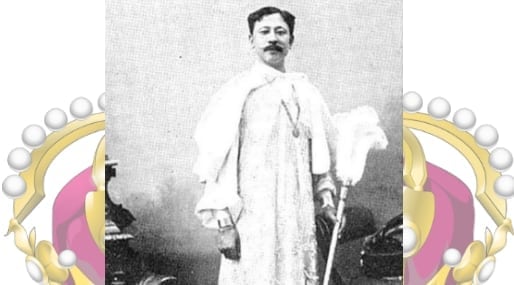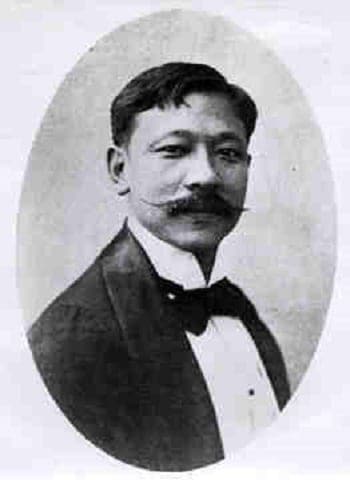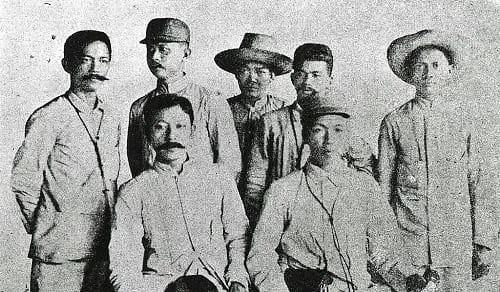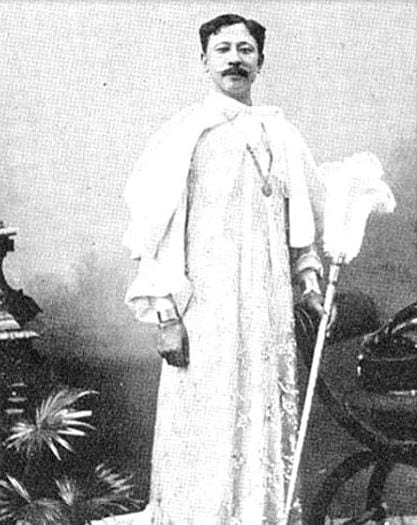Inside The “Royal” Life of Philippine History’s Ultimate “Balimbing”

Due to his ignominious title of being the greatest turncoat/balimbing in Philippine history, Pedro Paterno’s life and works are pretty much ignored today—which is too bad, because a review of his biography would reveal the hilariously histrionic workings of the man’s mind and give us an unabashed picture of the insanely ambitious man that was Pedro Paterno.
For starters, Paterno honestly believed he was a man of royal blood. According to him, the Paterno family started with the marriage of his great-grandfather Chinese apothecary Ming Mong Lo to a woman who directly descended from a noble called the Prince of Luzon who was also known as the Great Maguinoo.
As the clan later adopted the surname from Paterno Molo y Agustin (Ming Mong Lo’s son), the younger Paterno maintained the title was hereditary and passed down to each generation.
Such was Paterno’s belief in his royal lineage that he unashamedly signed his equally strange book claiming natives practiced a pre-Christian religion before the Spaniards came with “Pedro Alexandro Molo Agustin Paterno y de Vera Ignacio (Maguinoo Paterno), Doctor en Jurisprudencia.”
Also Read: 9 Pinoy Historical Villains Who Weren’t As Evil As You Think
Even more bizarre, Paterno designed the coach he used to travel around in Madrid with a personal coat of arms made with silver, the design of which consisted of a salakot-wearing sun surmounted with a ducal crown and bird. Below the sun were two bolos crossed together. Paterno also incorporated the design into his personal belongings, including his cards and blankets.

Paterno was undoubtedly not afraid to remind the Spanish (and later on the Americans) of his princely title. In a letter he sent to Governor-General Fernando Primo De Rivera’s nephew, Paterno said he would not settle for anything less than the title of Duke as reward for his services mediating the Pact of Biak-na-Bato because he belonged to the Maguinoong Paterno family and “because the natives have obeyed me as the great Maguinoo or Prince of Luzon (gran Maguinoo o Principe de Luzon) and the ex-revolutionists call me the arbiter of their destinies.”
Aside from the dukedom, Paterno also asked to be bequeathed “Grandee of Spain of the First Class” along with the position of senator in the Spanish legislature.
While Rivera did not accede to the demands of Paterno, he did publish the confidential letter, thereby exposing the latter to ridicule. However, the undaunted Paterno repeated the same spiel with the Americans upon his capture and made a self-serving open letter detailing his life, works, and accomplishments.

In the end, American authorities released Paterno but regarded him more as an insufferable ambisyoso rather than a genuine threat. In sum, he and fellow autonomist Felipe Buencamino were described by Governor General (later on US President) William Howard Taft thus:
“They are born politicians, as ambitious as Satan, and as jealous as possible of each other’s preferment.”
Reference
Mojares, R. (2006). Brains of the Nation: Pedro Paterno, T.H. Pardo de Tavera, Isabelo de Los Reyes, and the Production of Modern Knowledge. Ateneo University Press.
FilipiKnow
FilipiKnow strives to ensure each article published on this website is as accurate and reliable as possible. We invite you, our reader, to take part in our mission to provide free, high-quality information for every Juan. If you think this article needs improvement, or if you have suggestions on how we can better achieve our goals, let us know by sending a message to admin at filipiknow dot net
Copyright Notice
All materials contained on this site are protected by the Republic of the Philippines copyright law and may not be reproduced, distributed, transmitted, displayed, published, or broadcast without the prior written permission of filipiknow.net or in the case of third party materials, the owner of that content. You may not alter or remove any trademark, copyright, or other notice from copies of the content. Be warned that we have already reported and helped terminate several websites and YouTube channels for blatantly stealing our content. If you wish to use filipiknow.net content for commercial purposes, such as for content syndication, etc., please contact us at legal(at)filipiknow(dot)net
